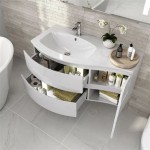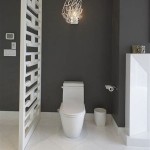Choosing the Right Pipe for Your Bathroom Exhaust Fan
Selecting the appropriate pipe for a bathroom exhaust fan is a critical step in ensuring efficient and safe ventilation. The primary function of a bathroom exhaust fan is to remove moisture and odors from the bathroom, preventing mold growth, structural damage, and unpleasant smells. The effectiveness of this system hinges significantly on the type and quality of the ductwork used to expel the air to the exterior of the building. Choosing the wrong type of pipe can lead to reduced airflow, condensation problems, increased fire risk, and ultimately, the failure of the ventilation system.
The best type of pipe will be determined by factors such as local building codes, environmental conditions, budget, and the overall design of the bathroom and home. It is essential to carefully consider these factors and research the options available before making a decision. Installing the correct type of ductwork will ensure the longevity and effectiveness of the exhaust fan system.
Understanding Code Requirements and Safety Considerations
Before selecting any type of ductwork, it is imperative to understand and adhere to local building codes and safety regulations. These codes are in place to protect homeowners and ensure that ventilation systems are installed safely and effectively. Many jurisdictions mandate specific materials and installation techniques for bathroom exhaust fan ductwork, often dictating the minimum diameter of the duct, the type of material permitted, and requirements for insulation and fire resistance. Failure to comply with these codes can result in fines, the need for costly rework, and potential safety hazards.
One of the most important safety considerations is fire resistance. Plastic or vinyl ductwork is generally prohibited in many areas due to its flammability and the toxic fumes it can release when burned. Metal ductwork, particularly galvanized steel, is the preferred choice for its fire-resistant properties. Some jurisdictions may allow the use of flexible metal ductwork, but it must meet specific fire safety standards and be installed according to the manufacturer's instructions. Using the wrong type of ducting not only increases fire risk but also invalidates insurance policies in many instances.
Another critical factor is the risk of backdrafting. Improperly installed or undersized ductwork can create excessive backpressure, causing the exhaust fan to work harder and drawing air back into the bathroom. This can introduce pollutants, such as carbon monoxide from furnaces or combustion appliances, into the home. To prevent backdrafting, the ductwork should be properly sized, installed with minimal bends, and equipped with a backdraft damper to prevent air from flowing back through the system. Regular inspections and maintenance of the ductwork and damper are essential to ensure proper function and safety.
Furthermore, ensure proper ventilation to the exterior of the building. Terminating the exhaust duct in an attic or crawlspace is a significant fire hazard and can cause moisture damage. The duct must extend to a proper termination point on the roof or sidewall, protected by a vent cap or louvered vent to prevent rain, snow, and pests from entering the ductwork.
Rigid Metal Ductwork: Galvanized Steel and Aluminum
Rigid metal ductwork, typically made from galvanized steel or aluminum, is generally considered the best option for bathroom exhaust fan systems due to its durability, fire resistance, and smooth interior surface. Galvanized steel is a cost-effective and widely available choice, offering excellent protection against corrosion and physical damage. Aluminum ductwork is lighter and more corrosion-resistant than galvanized steel, making it a good option in coastal areas or humid environments. However, it tends to be more expensive.
The smooth interior surface of rigid metal ductwork minimizes airflow resistance, allowing the exhaust fan to operate more efficiently and quietly. Reduced airflow resistance also means that the fan doesn't have to work as hard, extending its lifespan and reducing energy consumption. In contrast, flexible ductwork, especially when improperly installed, can significantly restrict airflow due to its corrugated interior surface and potential for kinks and bends.
When installing rigid metal ductwork, it's crucial to use proper fittings and sealing techniques to create airtight connections. Duct tape is not an acceptable method for sealing ductwork, as it degrades over time and loses its adhesive properties. Instead, use foil tape or duct mastic to seal all joints and seams, preventing air leakage and ensuring that the exhaust fan system operates at peak efficiency. Insulating the ductwork is also important, particularly in unconditioned spaces such as attics or crawlspaces. Insulation prevents condensation from forming on the exterior of the ductwork, which can lead to water damage and mold growth. Use appropriately rated insulation material with a vapor barrier to achieve optimal performance.
Rigid metal ductwork is more challenging to install than flexible ductwork, requiring precise cutting and fitting of the metal pipes. However, the benefits of improved airflow, durability, and fire resistance far outweigh the extra effort involved in the installation process. If necessary, consult with a professional HVAC contractor to ensure that the ductwork is installed correctly and complies with all applicable codes and regulations.
Flexible Ductwork: Options, Limitations, and Proper Installation
Flexible ductwork offers a convenient alternative to rigid metal ductwork in certain situations, particularly when navigating tight spaces or making complex bends. However, it is important to understand the limitations of flexible ductwork and to choose the right type for the application. There are several types of flexible ductwork available, each with its own characteristics and performance capabilities.
Insulated flexible ductwork consists of an inner core of flexible metal or plastic, wrapped in a layer of insulation and an outer vapor barrier. This type of ductwork is suitable for use in unconditioned spaces, as the insulation helps to prevent condensation and heat loss. Non-insulated flexible ductwork is typically used for short runs in conditioned spaces, where insulation is not required. Metalized flexible ductwork features a layer of metal foil on the interior surface, which helps to improve airflow and reduce noise. Vinyl flexible ductwork is the least expensive option, but it is also the least durable and may not be permitted in some jurisdictions due to fire safety concerns.
When installing flexible ductwork, it is crucial to minimize bends and kinks, as these can significantly restrict airflow. Keep the duct runs as short and straight as possible, and avoid sharp turns or excessive sagging. Support the ductwork at regular intervals to prevent sagging and to maintain proper airflow. Use metal straps or hangers to secure the ductwork, and avoid using duct tape to seal the joints. Foil tape or duct mastic provides a more durable and airtight seal.
Flexible ductwork is more prone to damage than rigid metal ductwork, so it is important to handle it carefully during installation and to protect it from physical damage. Avoid stepping on the ductwork or dragging it across rough surfaces. Inspect the ductwork regularly for signs of damage, such as tears, punctures, or collapsed sections. Replace damaged ductwork promptly to maintain proper airflow and prevent moisture problems.
While flexible ductwork can be a useful tool in certain situations, it is generally not recommended for long runs or for use in high-humidity environments. In these cases, rigid metal ductwork is the preferred choice due to its superior airflow, durability, and fire resistance. Always consult with a professional HVAC contractor to determine the best type of ductwork for your specific application, and to ensure that it is installed correctly and safely.

Bath Fan Duct Metal Or Plastic Structure Tech Home Inspections

Bathroom Exhaust Fans Building America Solution Center
Builder0915 The Post

What Type Of Duct To Use For A Bathroom Ventilation Fan

Blog

How To Use An In Line Exhaust Fan Vent Two Bathrooms Diy Family Handyman

What Pipe To Use For Bathroom Exhaust Fan Storables

The Best Way To Vent A Bathroom Fan Chicago Tribune

How To Insulate Bathroom Exhaust Fan Ducts The Easy Method Home Inspector Secrets

Bathroom Extractor Fan Install Using Rigid Plastic Duct
Related Posts







